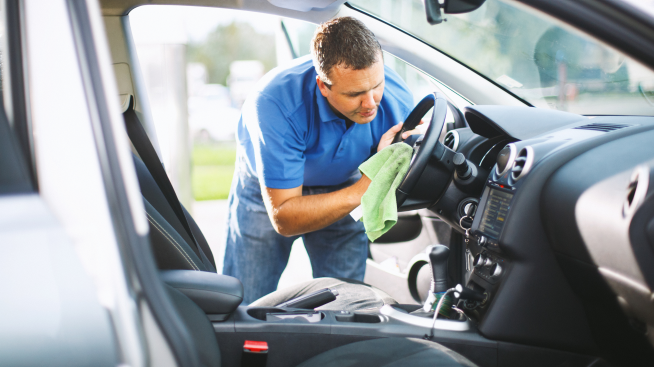How to trade in a car

You're ready to buy a new car. You have the make, model, and maybe even the dealership picked out. The only problem is, you're not sure what to do with your old car.
You do have options. You may want to sell the car to a private party, which can be straightforward if you know someone interested in buying it. But private sales can be time-consuming, and many of us don't have the time to place ads, show the car to numerous people, and take the steps necessary to complete the sale.
In most cases, the easiest way to get rid of your old car is to trade it in. Trading in your car at the dealership where you buy your new (or used) car is simple as long as you educate yourself about the process beforehand.
So, how do trade-ins work? When you decide to trade in a car, the dealership does an appraisal to determine what the car is worth and makes you an offer. If accepted, the trade-in value is then deducted from the cost of your new car. For example, if the car you wish to buy is priced at $15,000, and the dealership offers you a trade-in value of $3,500, you’ll finance or write a check for $11,500 for your new car, not counting any lien pay-off, fees or other additional costs involved.
How does trading in a car work?
Ready to learn how to trade in a car? There are a few things you can do to be better prepared for the trade-in process and ensure that you get the best price for your used car.
1. Do some preliminary research
Before you head into the dealership, be sure to do some preliminary research on how much your car is currently worth. Chase Auto has a free service provided to Chase customers that allows you to enroll and easily obtain the estimated trade-in value of your car by entering basic information like the year, model, mileage, and ZIP code.
2. Clean up your car
Looks matter, and even if your car is mechanically sound, taking it into the dealership dirty and filled with fast food wrappers or your kid's sporting equipment can automatically garner you a lower estimate. Take out the trash, wipe the dust, and take the car through the car wash before bringing it in for an estimate.
3. Obtain multiple offers
If you haven't already decided where you're buying your next car, or you're open to selling your car at one dealership and buying at another, you can obtain multiple trade-in estimates and choose the best one. Having multiple offers can also provide you with some leverage during negotiations.
4. Understand your existing loan
If your current car is paid off, the trade-in process should be pretty easy, but you may run into complications if you still owe money on the car that you're trading in. It may seem like adding your balance to the new loan is a good solution, but it can cause issues down the road, including putting you underwater on your loan, should something happen to the vehicle.
5. Always negotiate
Remember vehicle prices can be negotiated most of the time. If you've done your research and you know exactly how much your car is worth, you can counter the dealer’s original offer. Keep in mind that the appraiser is going to look for any potential issues, and trying to hide something rarely works, so always be upfront.
6. Sign the paperwork
Once you've agreed on a trade-in value, you're ready to complete the paperwork. Always double-check the sales contract to be sure that the negotiated trade-in value has been subtracted from the total price of the car. While you're examining the sales contract, keep an eye out for additional costs that may have been added. Remember, even if you've accepted the trade-in value, you're still not obligated to purchase the new car until all of the necessary paperwork has been completed and a loan is approved.
Should you trade in your car?
Trading in your car at a dealership isn't always the best solution. For example, if you still owe a lot of money on your current vehicle, the odds of getting the full funds to cover the existing debt could be a problem. If you only owe a little bit of money, you can probably negotiate a trade-in estimate that can cover most, if not all of the balance.
Another drawback to trading in your car at a dealership is you might not receive as much for the car that you would if you sold it privately, since making a profit on the trade-in is their primary goal. However, the convenience of having the dealership handle all of the paperwork involved in the trade-in and sale can make up for receiving a lower trade-in value. But if you're unable to negotiate a trade-in value that you're comfortable with, it might be better to go to another dealership or sell your vehicle to a private party.
If that new car is beckoning you, take a few moments to learn how to trade in a car, spruce up your current car, and head over to the dealership. You're ready to make a deal.



